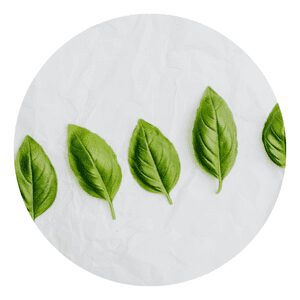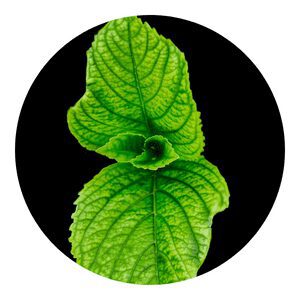How to Prepare Soil For Basil
To have a successful basil crop, you need to start with good soil.
This means preparing the soil before you plant the seeds or transplants.
Here are some tips on how to prepare soil for basil:

Basil Soil Menu
Why basil, what are the benefits?
Basil is an important herb in many cuisines and has a range of health benefits. Here are some reasons why you should consider adding basil to your diet:
Basil is a good source of antioxidants, which can help protect your cells from damage.
Basil may also help to reduce inflammation in the body.
Basil has been shown to have anti-bacterial properties, which means it may help to fight infection.
Does basil need to be organic?
Lorem ipsum dolor sit amet, consectetur adipiscing elit. Ut elit tellus, luctus nec ullamcorper mattis, pulvinar dapibus leo.
Steps to take before planting
When it comes to planting basil, there are a few key steps you need to take beforehand in order to ensure a successful crop.
Here are some tips on how to prepare your soil for basil:
1. The first step is to test the pH of your soil. Basil prefers a slightly acidic soil, so you’ll need to adjust the pH if necessary. You can do this by adding either lime or sulfur to the soil.
2. Next, you’ll need to add some organic matter to the soil. This can be in the form of compost, manure, or even just leaves and grass clippings. This will help improve the drainage and aeration of the soil.
3. Finally, you’ll need to loosen up the soil before planting. This can be done with a spade or tiller.
Basil is a kitchen staple That brightens up any dish To grow your own, you first need soil Here's how to get it right: The most important part of successful basil growth Is preparing the soil with care You'll want to use a loose, rich mix And make sure it's well drained
Chappy The Gardener
Test the soil
Basil is a popular herb known for its unique flavor and aroma. It’s easy to grow your own basil, but you need to make sure the soil is properly prepared first.
Here’s how to test the soil to see if it’s ready for planting.
To test the soil, take a small sample from the area where you plan to plant the basil. Place the sample in a bowl and add water until it’s damp but not saturated.
Then, use your fingers to mix the soil and water together.
If the mixture forms clumps that fall apart easily, the soil is ready to use.
If the mixture is too sandy or too clay-like, it needs more organic matter before it will be suitable for planting.
Once you’ve prepared the soil, you’re ready to plant your basil seedlings or transplants.
Amend the soil (if needed)
If you want to grow healthy basil plants, you need to start with good soil.
Basil is a heavy feeder and needs well-amended, nutrient-rich soil to produce an abundance of leaves.
If your soil is lacking in nutrients, you can amend it by adding compost or organic matter.
You can also add a slow-release fertilizer to the soil before planting.
To test the quality of your soil, grab a handful and squeeze it. If it crumbles easily, that’s a good sign.
If it sticks together in a clump, it may be too dense for basil roots to penetrate.
The ideal texture for basil is somewhere in between crumbly and sticky.
If your soil is too dense, you can improve drainage by adding sand or perlite.
Planting instructions
When it comes to planting basil, there are a few key things to keep in mind in order to have a successful crop.
First, it is important to know that basil is a tropical plant and therefore does best in warm weather.
If you are planting basil in the spring, make sure the last frost date has passed.
Second, well-drained soil is critical for basil plants – too much water can lead to root rot.
Be sure to loosen the soil before planting and add some organic matter to help with drainage.
Finally, give your basil plants plenty of space – they should be about 18 inches apart.
With these tips in mind, you’ll be on your way to harvesting delicious basil all season long!
Dig a hole
To grow basil, you need to start with good soil.
First, loosen the soil in the hole with a shovel.
Then, add some compost or manure to the hole.
Finally, mix the compost or manure into the soil.
After you’ve prepared the hole, you’re ready to plant your basil seedlings.
Give them plenty of space to grow, and water them regularly.
With a little care, you’ll have a bountiful harvest of fresh basil in no time!
Place the plant
Basil is a popular herb that is used in many cuisines. It has a strong flavor and can be used in both cooked and raw dishes. When growing basil, it is important to start with g
ood soil. Preparing the soil properly will help the plant to grow well and produce a good crop.
There are a few things to keep in mind when preparing soil for basil. The first is to make sure that the soil is loose and well-drained.
Basil does not like to sit in wet or soggy soils, so it is important to make sure that the drainage is good.
The second thing to consider is fertility. Basil likes soils that are high in organic matter.
Adding compost or manure to the soil before planting will help to provide the nutrients that the plant needs.
Finally, basil prefers soils with a slightly acidic pH. A pH of 6.
Fill in around the plant
Basil is a popular herb that is used in many dishes.
When growing basil, it is important to fill in around the plant.
This will help the plant to grow strong and healthy.
There are a few things to keep in mind when filling in around the plant.
The first is to make sure that the soil is loose. The second is to add compost or manure to the soil.
This will help the plant to get the nutrients it needs. Finally, water the plant well.
By following these simple steps, you can ensure that your basil plant will grow strong and healthy.
Watering instructions
If you’re looking to add some flavor to your dishes, basil is a great option.
But before you can start adding this herb to your recipes, you need to prepare the soil.
Here are some watering instructions to help you get started.
Basil is a delicate plant, so it’s important to water it carefully. Water the soil, not the leaves, and avoid getting water on the stems.
Water in the morning so the leaves have time to dry off before nightfall. Basil likes moist but not soggy soil, so be sure to check the moisture levels frequently.
The best way to determine if your basil needs water is to feel the soil. If it’s dry several inches below the surface, it’s time to water.
Use a gentle stream of water and give the plant enough time to absorb moisture.
In conclusion,it is important to remember the basic needs of basil when preparing soil for planting.
The herb requires full sun, well-drained soil, and consistent moisture.
Add compost or well-rotted manure to the planting area to improve drainage and fertility.
Be sure to water regularly and fertilize every two weeks during the growing season.
With a little care, your basil plants will thrive and provide you with an abundance of fresh leaves to enjoy all summer long.
Click To Grow
Helps Us Grow – Share If You Like















